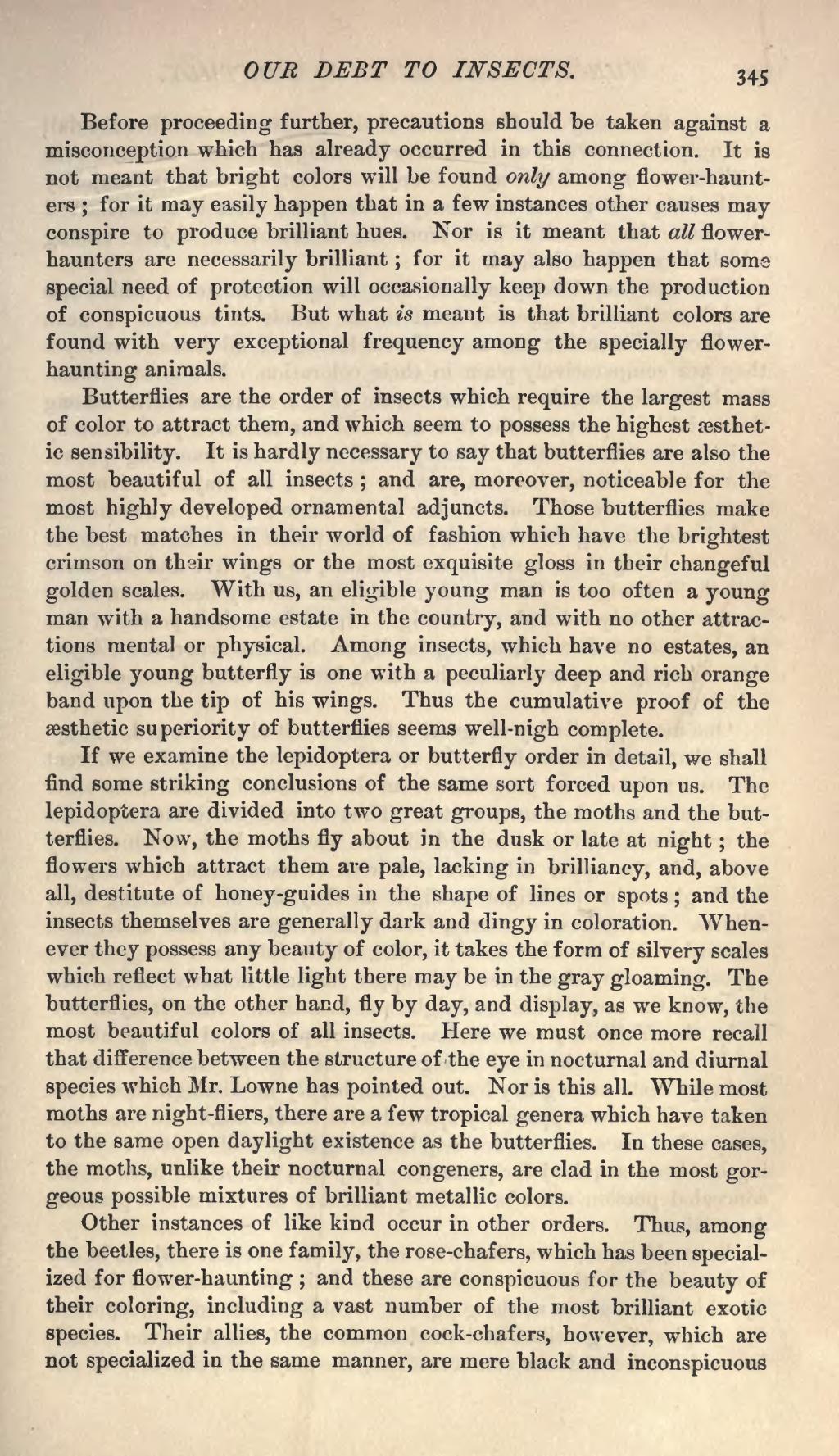Before proceeding further, precautions should be taken against a misconception which has already occurred in this connection. It is not meant that bright colors will be found only among flower-haunters; for it may easily happen that in a few instances other causes may conspire to produce brilliant hues. Nor is it meant that all flower-haunters are necessarily brilliant; for it may also happen that some special need of protection will occasionally keep down the production of conspicuous tints. But what is meant is that brilliant colors are found with very exceptional frequency among the specially flower-haunting animals.
Butterflies are the order of insects which require the largest mass of color to attract them, and which seem to possess the highest æsthetic sensibility. It is hardly necessary to say that butterflies are also the most beautiful of all insects; and are, moreover, noticeable for the most highly developed ornamental adjuncts. Those butterflies make the best matches in their world of fashion which have the brightest crimson on their wings or the most exquisite gloss in their changeful golden scales. With us, an eligible young man is too often a young man with a handsome estate in the country, and with no other attractions mental or physical. Among insects, which have no estates, an eligible young butterfly is one with a peculiarly deep and rich orange band upon the tip of his wings. Thus the cumulative proof of the æsthetic superiority of butterflies seems well-nigh complete.
If we examine the lepidoptera or butterfly order in detail, we shall find some striking conclusions of the same sort forced upon us. The lepidoptera are divided into two great groups, the moths and the butterflies. Now, the moths fly about in the dusk or late at night; the flowers which attract them are pale, lacking in brilliancy, and, above all, destitute of honey-guides in the shape of lines or spots; and the insects themselves are generally dark and dingy in coloration. Whenever they possess any beauty of color, it takes the form of silvery scales which reflect what little light there may be in the gray gloaming. The butterflies, on the other hand, fly by day, and display, as we know, the most beautiful colors of all insects. Here we must once more recall that difference between the structure of the eye in nocturnal and diurnal species which Mr. Lowne has pointed out. Nor is this all. While most moths are night-fliers, there are a few tropical genera which have taken to the same open daylight existence as the butterflies. In these cases, the moths, unlike their nocturnal congeners, are clad in the most gorgeous possible mixtures of brilliant metallic colors.
Other instances of like kind occur in other orders. Thus, among the beetles, there is one family, the rose-chafers, which has been specialized for flower-haunting; and these are conspicuous for the beauty of their coloring, including a vast number of the most brilliant exotic species. Their allies, the common cock-chafers, however, which are not specialized in the same manner, are mere black and inconspicuous
